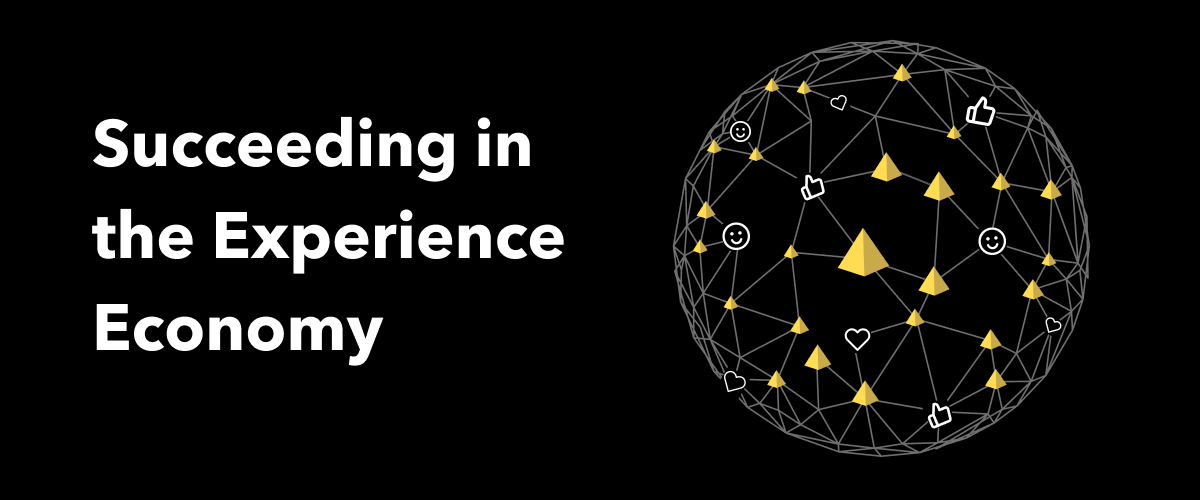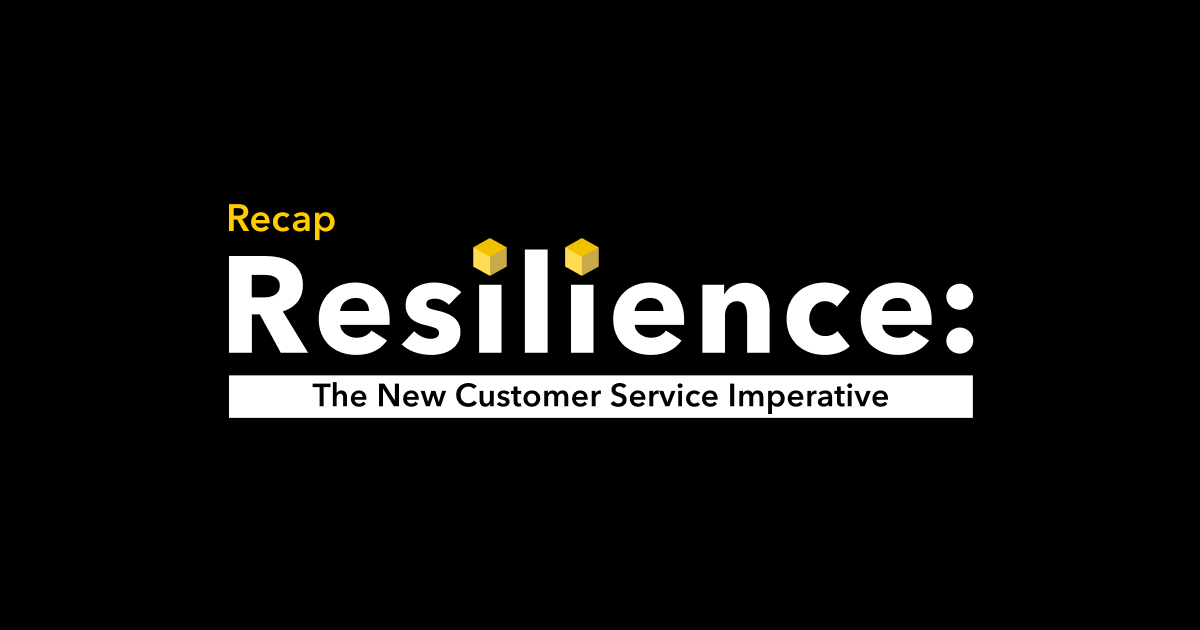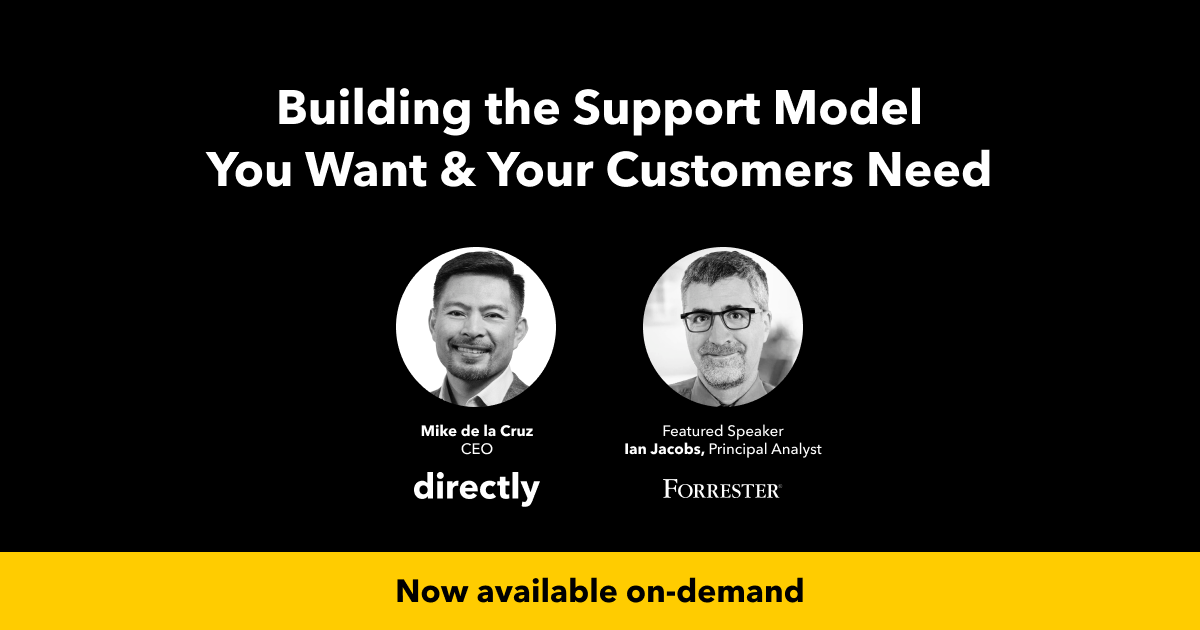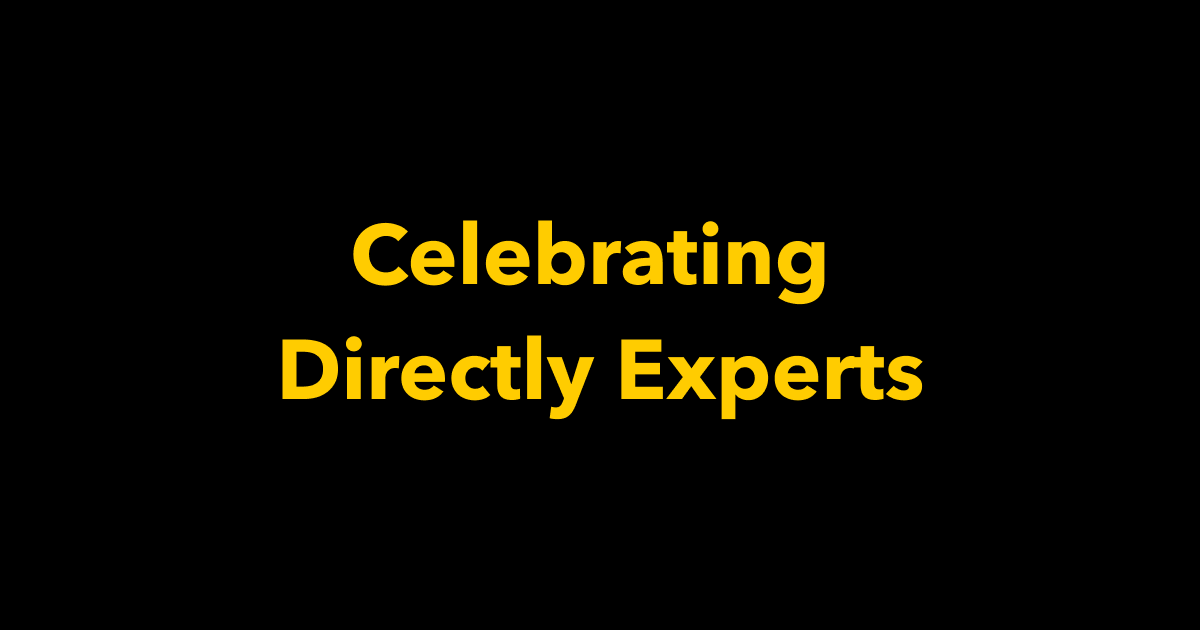If you’re a CX leader and you’re NOT leveraging the talent within your customer base, you’re missing a critical step in succeeding within the new experience economy.
During a recent webinar, I had the opportunity to speak with SAP’s Head of Support for Intelligent Technologies, Rohan Patel. And one thing the long-time customer experience (CX) leader made abundantly clear is that today’s customers demand (and deserve) more than traditional product or account support. In the experience economy — a term first coined in this seminal Harvard Business Review post from 1998 — we expect exceptional experiences that extend well beyond the basic purchase and use of a product.
As customer service (CS) leaders, Patel said, “we play a critical role in the experience economy. More than being purely a technology organization that’s delivering traditional products, we have to couple that excellence of product with delivering amazing customer experience. And we need to be delighting our customers with every single interaction.”
So, in practical terms, what does that mean for customer service leaders? In a word, diversity.
“We are delivering with more complexity and more diversity than ever before,” Patel said, describing SAP’s mix of products and services. “With the different types of products, the gender diversity we see out there, the age diversity we see out there, the diversity we see in people’s ability to consume technology — we’re not only delivering to our traditional base.
“So we need to find more diverse ways to meet the diverse needs and expectations of that community.”
[LEARN HOW SAP IS LEVERAGING DIRECTLY’S ON-DEMAND EXPERTS
Download the full webcast here]
What does CS workforce diversity look like?
As a recent Forrester report suggested, investing in AI and technology is a crucial piece of building a more resilient customer service organization. However, an equally important part of flexible customer service in this experience economy is having a diverse and talented labor pool.
For most of our customers, that means leveraging traditional resources alongside on-demand experts from our Directly on-demand network.
A team of call center agents and an expert network complement one another perfectly — especially when you consider the kinds of questions that each group is best suited to answer.
For example, trained internal or BPO agents excel at helping customers sort out billing or account-related questions, sometimes tapping into internal systems and sensitive account-related information. Meanwhile, experienced on-demand experts help their fellow users troubleshoot technical and product-related issues. Because these on-demand experts have firsthand experience — often with years of experience using that product or service — they can more efficiently help fellow users resolve their issues. It comes down to matching the right workforce for the right support experience.
Benefits of a BPO and Directly working side by side
The benefits of a combined workforce of full-time customer service agents AND on-demand experts go far beyond just answering diverse questions. They include:
- Scalability — As businesses grow, CX leaders can tap into the wealth of knowledge and resources available in the network which scales quickly (within days), without having to renegotiate contracts or require long training cycles.
- Cost diversity — Leveraging an on-demand network gives CX leaders a more direct cost structure based on business outcomes. You only pay on-demand experts when they successfully resolve issues.
- Surge proof — While CX leaders can account for expected seasonal surges, using an on-demand network gives additional coverage for unexpected surges without additional ramping cost.
- Overcoming the talent shortage — It’s becoming increasingly difficult to find and keep full-time talent for the contact center. Using an on-demand network can connect customer service organizations with highly skilled, knowledgeable individuals that are not interested in full-time, traditional customer service work.
- Continuity — The pandemic taught us that the more diverse we are in our approach to CS, the more likely we’re going to withstand even the most dire of circumstances — including call centers being shuttered.
These benefits play out every day for global companies like Microsoft. The technology giant uses a combination of traditional contact centers, Directly on-demand experts, and automation to support its Xbox gaming platform. And with this diversity of resources, the company was able to respond — and deliver high customer satisfaction — when its inquiries significantly increased during the recent launch of its Xbox Series X. They were able to serve their customers during a key time in their customer journey.
How you can quickly add on-demand experts into your CS ecosystem
One misconception that comes up when we talk with potential new partners is that Directly’s platform requires you to replace existing technology in the customer service stack. However, it isn’t a “rip and replace” model. The reality is that we easily plug into your existing support infrastructure — and our experts can start augmenting your customer service workforce in a matter of a few weeks.
We start a proof-of-concept by analyzing your historical customer service tickets. Based on what we learn regarding the types of questions coming in, we then determine the strategic impact of the program, define the initial scope, initiate the technical integration, and recruit, screen and onboard your experts. Then we launch, in a strategic way so as not to disrupt your existing customer service infrastructure.
So, if you’re thinking in terms of a typical 30-60-90 day plan, you can expect the following:
- Within 30 days, we have a live proof-of-concept in which we’re methodically measuring performance and optimizing.
- Within 60 days, we’re starting to make bigger changes to the program, and scaling into new areas (e.g., different types and volume of questions, languages, etc.)
- Within 90 days, you are seeing maturing performance and the strategic impact. You’re now able to see the relationship between the performance of your full-time agents and Directly Experts, and can make decisions on how to optimize those combined resources.
How diversity can help you deliver in the experience economy
One of the great things about working in the customer service industry is that every one of us is also a customer of a broad range of products and services. When Rohan talked about how our industry needs to think in terms of meeting the challenges of the experience economy, it resonated.
Like everyone, I’ve purchased products and had trouble setting them up. I’ve had problems with different accounts and billing. Sometimes I have questions before I buy products. So, I regularly email, call, and chat with customer service representatives. One day, that might mean connecting to an agent in a call center that can help me with billing. On another, I might be messaging with a fellow user/on-demand expert who may have had the same issue I did — and can help unblock me.
In all these cases, I expect a great experience. And a great experience will bond me to that brand and keep me loyal to their products.
Rohan Patel said it best. In the experience economy, he said, support “can’t only be done in a single way. We need to show great flexibility in the ways in which we deliver support — and in the resources that we have available when our customers need them.”
Why Directly?
Directly delivers world-class customer service for leading Fortune 500 brands. Captive and outsourced contact center models increasingly can’t keep up with customer service demands, while self-service is only effective at deflecting simple contacts. With Directly, we help you troubleshoot a wide range of technical issues using on-demand experts and best-in-class AI technology. Customers like Microsoft, Samsung, and Airbnb partner with Directly to reduce contact center volume up to 40%, boost CSAT up to 20%, and save millions per year. Contact us to set up a demo today.



